Solidarité Française was a French far-right league founded in 1933 by the perfume manufacturer François Coty (1874-1934) as the "Parti national corporatif républicain".
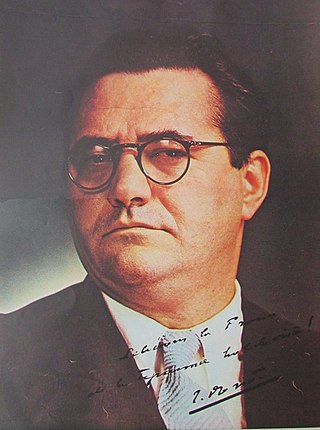
Jacques Doriot was a French politician, initially communist, later fascist, before and during World War II.

Marcel Déat was a French politician. Initially a socialist and a member of the French Section of the Workers' International (SFIO), he led a breakaway group of right-wing Neosocialists out of the SFIO in 1933. During the occupation of France by Nazi Germany, he founded the collaborationist National Popular Rally (RNP). In 1944, he became Minister of Labour and National Solidarity in Pierre Laval's government in Vichy, before escaping to the Sigmaringen enclave along with Vichy officials after the Allied landings in Normandy. Condemned in absentia for collaborationism, he died while still in hiding in Italy.

Georges Valois was a French journalist and national syndicalist politician. He was a member of the French Resistance and died in the Bergen-Belsen concentration camp.

Le Faisceau was a short-lived French fascist political party. It was founded on 11 November 1925 as a far right league by Georges Valois. It was preceded by its newspaper, Le Nouveau Siècle, which had been founded as a weekly on February 26 but became a daily after the party's creation.
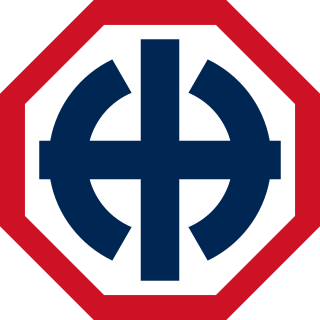
The French Popular Party was a French fascist and anti-semitic political party led by Jacques Doriot before and during World War II. It is generally regarded as the most collaborationist party of France.
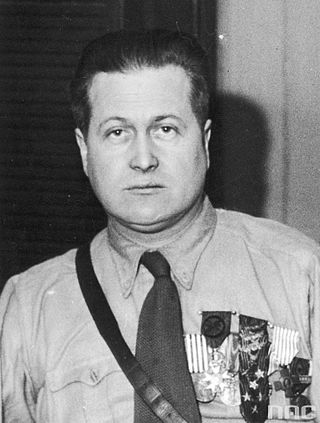
Marcel Bucard was a French Fascist politician.
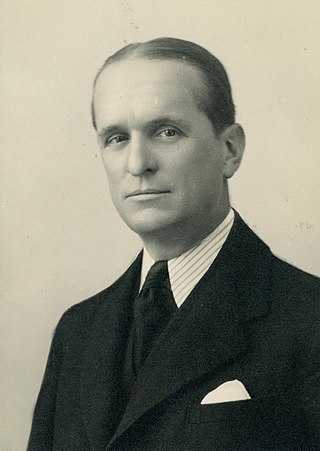
François de La Rocque was the leader of the French right-wing league the Croix de Feu from 1930 to 1936 before he formed the more moderate nationalist French Social Party (1936–1940), which has been described by several historians, such as René Rémond and Michel Winock, as a precursor of Gaullism.
The far-right leagues were several French far-right movements opposed to parliamentarism, which mainly dedicated themselves to military parades, street brawls, demonstrations and riots. The term ligue was often used in the 1930s to distinguish these political movements from parliamentary parties. After having appeared first at the end of the 19th century, during the Dreyfus affair, they became common in the 1920s and 1930s, and famously participated in the 6 February 1934 crisis and riots which overthrew the second Cartel des gauches, i.e. the center-left coalition government led by Édouard Daladier.
The far-right tradition in France finds its origins in the Third Republic with Boulangism and the Dreyfus affair. The modern "far right" or radical right grew out of two separate events of 1889: the splitting off in the Socialist International of those who chose the nation and the culmination of the "Boulanger Affair", which championed the demands of the former Minister of War General Georges Boulanger. The Dreyfus affair provided one of the political division lines of France. Nationalism, which had been before the Dreyfus affair a left-wing and Republican ideology, turned after that to be a main trait of the right-wing and, moreover, of the far right. A new right emerged, and nationalism was reappropriated by the far-right who turned it into a form of ethnic nationalism, itself blended with anti-Semitism, xenophobia, anti-Protestantism and anti-Masonry. The Action française, first founded as a review, was the matrix of a new type of counter-revolutionary right-wing, and continues to exist today. During the interwar period, the Action française (AF) and its youth militia, the Camelots du Roi, were very active. Far right leagues organized riots.

The Révolution nationale was the official ideological program promoted by the Vichy regime which had been established in July 1940 and led by Marshal Philippe Pétain. Pétain's regime was characterized by anti-parliamentarism, personality cultism, xenophobia, state-sponsored anti-Semitism, promotion of traditional values, rejection of the constitutional separation of powers, modernity, and corporatism, as well as opposition to the theory of class conflict. Despite its name, the ideological policies were reactionary rather than revolutionary as the program opposed almost every change introduced to French society by the French Revolution.

The National Popular Rally was a French political party and one of the main collaborationist parties under the Vichy regime of World War II.

The Croix-de-Feu was a nationalist French league of the Interwar period, led by Colonel François de la Rocque (1885–1946). After it was dissolved, as were all other leagues during the Popular Front period (1936–38), La Rocque established the Parti social français (PSF) to replace it.
Robert Soucy is an American historian, specializing in French fascist movements between 1924 and 1939, French fascist intellectuals Maurice Barrès and Pierre Drieu La Rochelle, European fascism, twentieth-century European intellectual history, and Marcel Proust's aesthetics of reading.
Roland Silly (1909–1995) was a French trade unionist and politician.

The French National-Collectivist Party, originally known as the French National Communist Party, was a minor political group active in the French Third Republic and reestablished in occupied France. Its leader in both incarnations was the sports journalist Pierre Clémenti. It espoused a "national communist" platform noted for its similarities with fascism, and popularized racial antisemitism. The group was also noted for its agitation in support of pan-European nationalism and rattachism, maintaining contacts in both Nazi Germany and Wallonia.
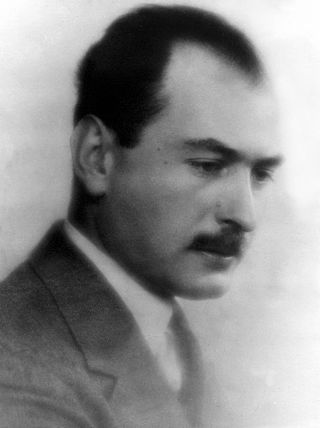
Jacques Arthuys was a French industrialist, a right-wing intellectual and early leader of the French Fascist movement. He was initially a pan-European but became opposed to the Nazi movement. During World War II (1939–45) he was leader of a French Resistance organization. He was arrested, deported to a concentration camp and killed by the Germans.
Léon Émery was a French pacifist activist and a French collaborationist with the Nazi regime.

Pierre Clementi, real name Francis Anthony Clementi, was a French politician active during the 1930s and the occupation of France during the Second World War. He was the founder and leader of the French National-Collectivist Party, which espoused a platform of National Communism, a combination of Fascism, French nationalism and to a certain extent Communism.
French nationalism during World War II experienced divided attitudes towards the Nazi occupier, the Vichy government and the resistance.















